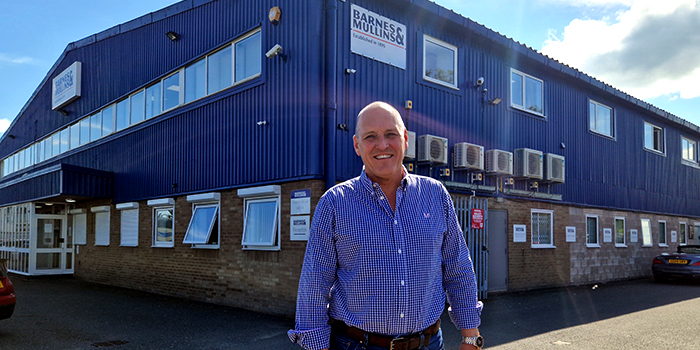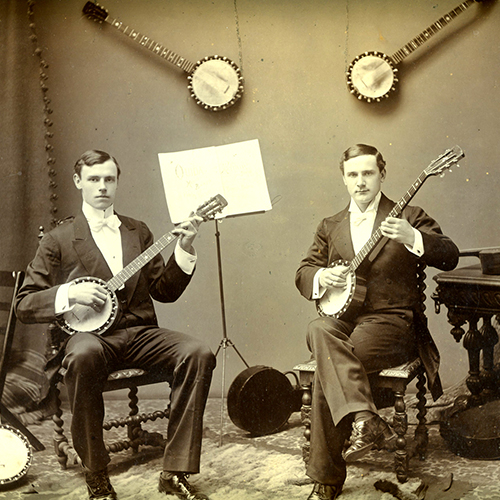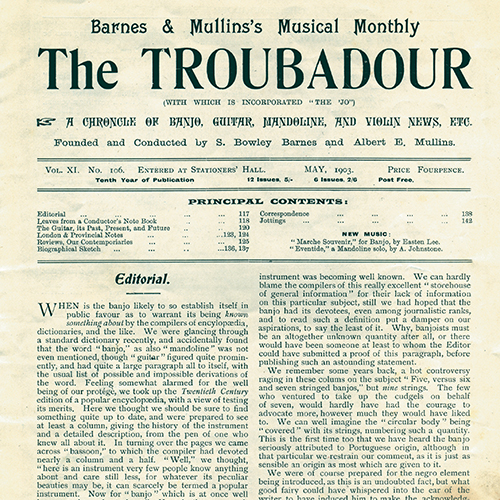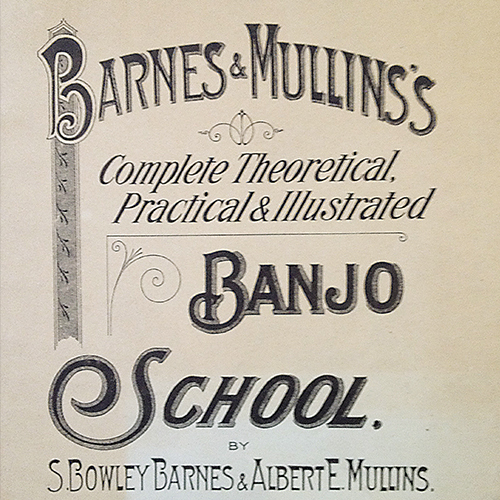Barnes & Mullins - A historical timeline
From humble beginnings in 1895, Barnes & Mullins now find themselves at the forefront of Musical Instrument distribution within the UK, Europe and across the world. Dealing with hundreds of Music Stores in the UK and Ireland plus hundreds more retailers and wholesalers in around the world, Barnes & Mullins are proud to manufacture and distribute some of the world's best musical instruments and accessories. Originally founded in Bournemouth, and subsequently based in London for nearly 100 years, B&M are now located in Oswestry close to the English / Welsh border in beautiful, rural Shropshire. From their 40,000sqft sales, marketing and warehousing facility, B&M's owner and managing director Brian Cleary oversees the daily despatch of thousands of musical instruments and accessories to music stores, wholesalers and distributors across the globe.
 |
| B&M's Owner and Managing Director, Brian Cleary, 2023 - at our Oswestry Headquarters. |
A Brief Timeline:
- 1894: Mr Albert Mullins and Mr S. Bowley Barnes started “The Jo” and "The Troubadour" their famous musical instrument journals. The 'Guitarist Magazines' of the Victorian era.
- 1895: The Barnes & Mullins company was founded in Bournemouth, on England's south coast. Specialising in all things banjo, they soon began manufacturing their own banjos as well as importing many other instruments. The original Barnes and Mullins banjos are still sought after today, with collectors seeking them out all over the world.
- 1900: The company is moved from Bournemouth to Rathbone Place, London.
- 1914: At the age of 40, Albert Mullins, along his 10yr old daughter Eileen, sadly drowned when the ‘Empress of Ireland’ sank on the St Lawrence River, Canada. He was on the home leg of a 2 year sales trip around the world.
- 1915: Bowley Barnes, recovering from the loss of his dear friend and business partner, continued the business thereafter.
- 1964: Kate Mullins, Albert's widow who miraculously survived the shipwreck 50 years earlier, passed on.
- 1976: Mark Barnes – son of Bowley Barnes – moved the business to Grays Inn Road, Bloomsbury, working with the company until his death in 1986. Mark was greatly admired and respected by employees and customers alike who were quick to tell of his fair and generous nature.
- 1986: B&M restructures without Mark Barnes' leadership, building a new team around the existing set of senior staff members.
- 1999: Bruce Perrin – a Company Director since 1986 – became Managing Director and moved the business from London to the current location - Grays Inn House - a modern 46000sqft warehouse and office facility in Oswestry, Shropshire, West Midlands.
- 1999: Brian Cleary joined the company, becoming Sales Director shortly afterward.
- 2009: Bruce Perrin and Brian Cleary completed the purchase of the Barnes & Mullins company from the previous family trust, taking full ownership and joint managing directorship.
- 2021: Bruce Perrin retires, and Brian Cleary takes sole ownership of the company.
- Present day: Brian Cleary continues to lead the company into the future.
 |
 |
 |
 |
The Empress of Ireland: A Forgotten Tragedy.
In 2014, working with former music industry publication, MIPro, an article was commissioned, exploring the remarkable and tragic events surrounding the Empress of Ireland: Albert Mullins' final resting place. The event has been called the 'forgotten tragedy', occuring as it did, so close to the beginning of the First World War, and only 2 years after the sinking of the Titantic. It remains to this day, Canada's greatest peacetime, maritime distaster.
You can read the 2014 article here: A Forgotten Tragedy: The Empress of Ireland.
 |
Albert Mullins: Baggage Discovered 100yrs after tragic sinking.
During 2023, we were fortunate enough to make contact with David Saint-Pierre, a Canadian historian with a particular interest in the Empress of Ireland. In 1986, Mark Reynolds, an experienced wreck diver had recovered a number of artefacts and fragments of paper from the Empress, which until 2023 were in a Museum on Canada's eastern coast.
Working together, David Saint-Pierre and Brian Cleary have managed to ascertain that the bag from which these artefacts and notes were obtained belonged to none other than Albert Mullins. These items are a testament to the Mullins' 2 years of travel, as well revealing some of Albert's contacts and even potentially his 'salesman's journey planner'.
 |
